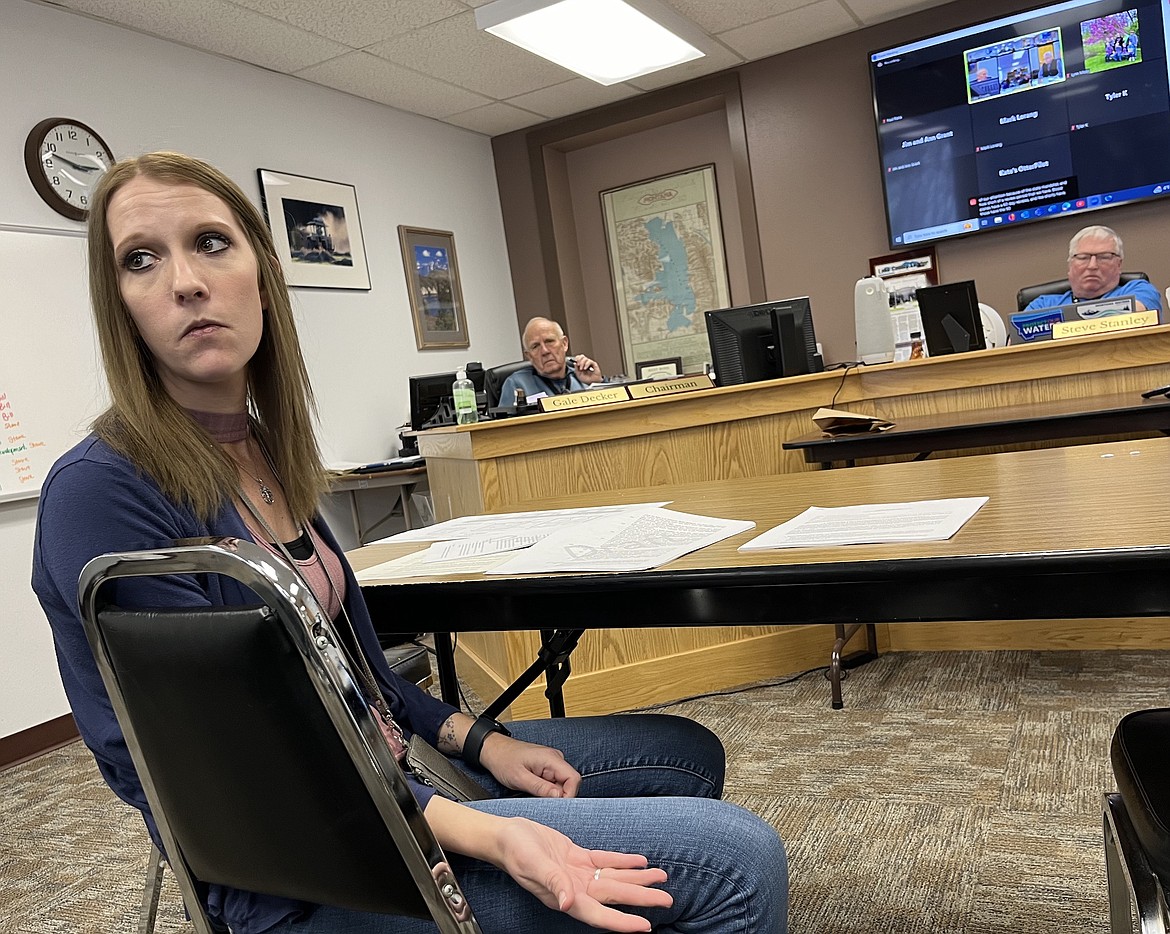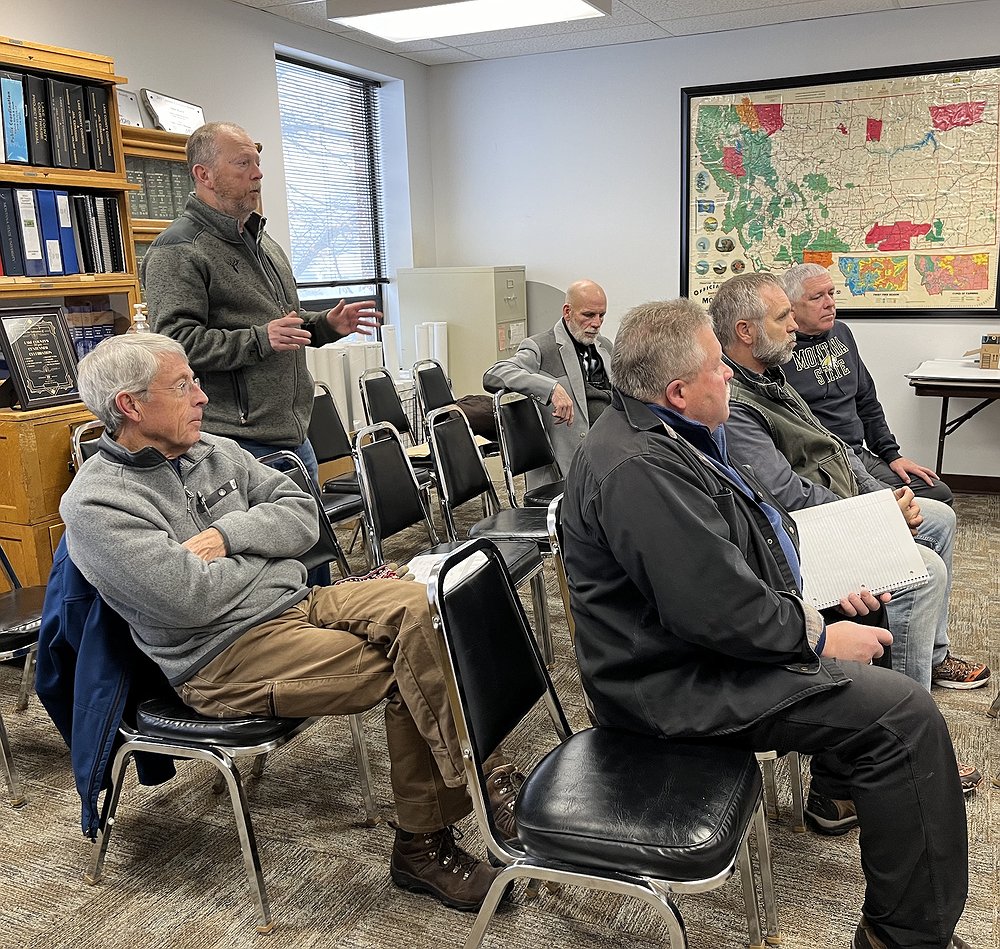Commissioners vote to streamline lakeshore protection regs
KRISTI NIEMEYER | Hagadone News Network | UPDATED 1 year, 11 months AGO
Kristi Niemeyer is editor of the Lake County Leader. She learned her newspaper licks at the Mission Valley News and honed them at the helm of the Ronan Pioneer and, eventually, as co-editor of the Leader until 1993. She later launched and published Lively Times, a statewide arts and entertainment monthly (she still publishes the digital version), and produced and edited State of the Arts for the Montana Arts Council and Heart to Heart for St. Luke Community Healthcare. Reach her at [email protected] or 406-883-4343. | January 17, 2024 11:00 PM
After multiple community meetings and three public hearings, the Lake County Commissioners voted last Thursday to significantly update the Lakeshore Protection Regulations.
The meeting, held during a blizzard, attracted a trio of dock builders, former planning board chair Steve Russo, and Paul Bishop with Flathead Lakeshore Consulting.
Lake County planning director Tiffani Murphy acknowledged that updating the regulations “has been a very, very long process.”
Regulations have been on the books since 1979, in keeping with legislation requiring county governments to monitor development within 20 feet of the shoreline and out into lakes larger than 160 acres. Portions of Flathead Lake, Swan Lake and Lake Mary Ronan fall into the county’s regulatory purview.
The current version was initially passed in 2001 and amended in 2014 and 2021. Efforts to further amend the document began in 2022 and have since included three public hearings and four community meetings.
The main goal of revamping the regulations was “a desire to simplify and take care of some of the issues we thought could be done without a permit,” Murphy said.
Among the significant changes adopted last week:
• Movable items, such as boat lifts, boat rails, mooring buoys, fire pits and temporary storage structures, no longer need a permit as long as they meet certain criteria.
• Maintenance on existing structures that costs $1,500 (materials only) or less will no longer require a permit. That includes routine or seasonal work, cleaning up debris, establishing new native plants and maintaining existing vegetation.
• A consistently lower lake level could be taken into consideration as a “hardship” for homeowners when applying for a zoning variance.
• Emergency work is now exempt from standard permit requirements, as long as the planning department is promptly notified, and “a genuine and true emergency condition” threatens property or improvements and is caused by extenuating circumstances.
Russo urged the commissioners to adopt the regulations, even if it means additional amendments will be made down the road.
“We've made a lot of changes that have made things a whole lot better,” he said. “And to not adopt this means we're stuck for another year or however long with the old regulations that are really old regulations.”
Bishop noted that last summer’s diminished lake level was a major issue for his clients. “I definitely advocate for the water-level hardship to be allowed for variances,” he said. “I think that's mostly what people talk to me about now is what can I do to future-proof myself against a variable lake level.”
The county’s lack of ability to enforce lakeshore zoning regulations also came up, as did the time it takes to apply for, and receive, a permit or zoning variance. Murphy said new software has sped up the process and led to fewer incomplete applications.
“We do try to make the review as simple as we can. Unfortunately, this summer there were a lot of issues with staffing.”
However, she was optimistic that with a full staff, streamlined regulations and the new permitting system “we'll start to see a better average of permits.”
She added that waiving the permit process for boat lifts that aren’t within the mandatory setback “should actually take some of the frustration out of permitting.”
“That would be good,” said Clarence Walhood of W&W Marine. “I know all of us dock builders are dealing with it. It's a hard burn.”
Lack of enforcement
Commissioner Gale Decker noted that some of the public comments expressed frustration about the lack of enforcement of lakeshore regulations. “Enforcement really is a crucial part of it but without more staff and time to visit properties and gauge enforcement, it’s fairly difficult to do.”
Under the current regulations, citizens are primarily responsible for submitting complaints.
“It puts neighbors in a bad spot,” Commissioner Bill Barron said. “But if you want something done and you want it done right away, you need to get involved.”
Jim Grant, a member of the Friends of Lake Mary Ronan, reminded commissioners, via Zoom, that years of testing shows that the water quality of Lake Mary Ronan is significantly impaired. He said their organization has been working with the Department of Environmental Quality to develop a restoration plan for the lake.
“But our time will be worthless, as well as all the planning board’s time and effort, if enforcement isn't strengthened and done,” he said. “I want to encourage you to uphold the legal responsibility the state has given you to do the enforcement.”
He said relying on the public to police their neighbors isn’t a very effective strategy. Instead, he suggested empowering the county planning director to enforce the regulations and looking at ways to fund and hire a part-time lake monitor to talk to landowners around Flathead, Lake Mary Ronan and Swan lakes. He also advocated collaborating with Montana Fish, Wildlife and Parks.
“This would be very little expenditure and would help us in trying to turn this lake around before it does die,” he said.
Bigger boat houses
One sticking point was the size of boat houses. The amended regulations limit the size to 30 feet long, 30 feet wide and 12 feet tall.
Bishop told commissioners the 30-by-30 footprint proposed in the regulations “is inadequate.”
“I do see lots of people with big boats. There are more and more coming,” he said. “And at the cost of those boats today, they definitely want to protect them.”
Russo suggested using an overall square footage instead of a defined footprint – a notion that seemed to gain traction with dock builders and commissioners alike.
Barron favored hammering out those parameters at last week’s meeting, while Decker argued for holding off and gathering more input.
“The amendment process would allow people to weigh in as far as public comment, what their ideas are, what their suggestions are,” he said.
Murphy noted that her department fields a lot of requests for boat-house variances.
“Part of this rewrite is that we're trying to reduce the number of variances that we have to bring to you and that the contractors and the public are having to apply for,” she said. “Variances are not cheap and we know that that's not something they want to have to continue applying for all the time. We know it's something we can fix.”
“I'm just about getting it right and not having to go for a variance every time for some of these things that are going to come up,” said Brett McCrumb of McCrumb Construction.
Ultimately, the commissioners passed the amended regulations without changing the existing standards for boat houses and vowed to hold public meetings on the matter in the near future. The revised regulations are posted at www.lakemt.gov/217/Lakeshore-Protection.
ARTICLES BY KRISTI NIEMEYER

County, Tribes still wrangling with state for PL 280 money
Funding for Public Law 280 – the federal legislation that governs how felonies involving tribal members are prosecuted on the Flathead Reservation – continues to evade Lake County and the Confederated Salish and Kootenai Tribes, which have yet to secure a promised payment of $1.25 million apiece from the State of Montana.

Polson Commission weighs pros, cons of second fire station
The debate over the potential location of a second fire station for the City of Polson elicited questions and suggestions at a public workshop Monday night, held prior to the regular city commission meeting.

Rotarians disperse free dictionaries to third graders in Lake County
To all those cynical adults who think dictionaries have gone the way of dinosaurs, replaced by omnipresent search engines: third graders across Lake County beg to differ.



